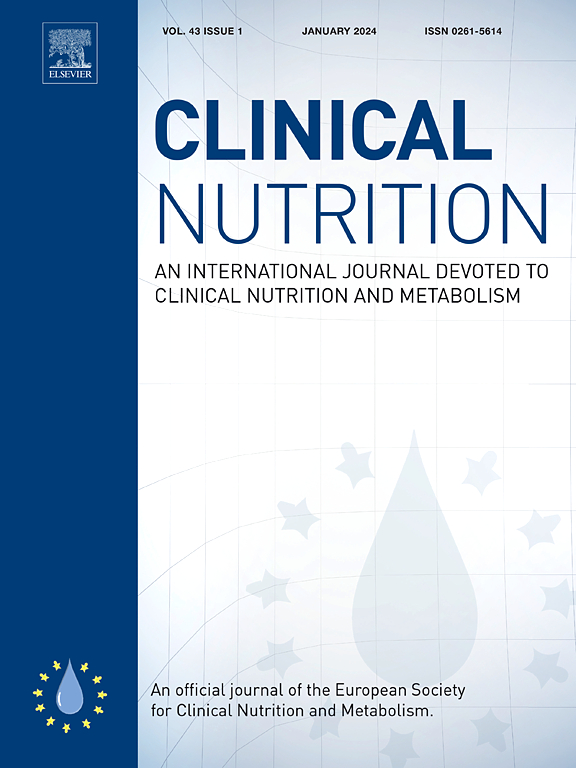Divergent hypoglycemic and hyperglycemic responses to the components of evening meals. A general adult population study in individuals without diabetes (AEGIS study)
IF 6.6
2区 医学
Q1 NUTRITION & DIETETICS
引用次数: 0
Abstract
Background and aim
Few real-life studies have analyzed the glycemic response to nutrients in individuals without diabetes. We investigated the glycemic response to evening meals in relation to individual characteristics, nutrient components, and preprandial and postprandial routines.
Methods
A cross-sectional study of 489 individuals without diabetes from a randomly selected general adult population (310 women, median age 46 years, range 18–84 years) was conducted using a continuous glucose monitoring device for 7 days. The study recorded the participants’ glycemic profile at 6 h after dinner, the food consumed at dinner, the fasting duration before dinner, and the duration between the end of dinner and going to bed. Principal component analysis and multilevel functional data analysis were used to interpret the data.
Results
On average, a postprandial glycemic peak was observed at 45 min, followed by a decline to baseline levels from 90 min onwards. Older age, higher body mass index, and large meals (especially those high in starch and dairy products) were all significantly associated with higher glucose levels throughout the 6 h after dinner. The fruit component was associated with a higher initial glycemic peak, followed by a lowering glycemic effect thereafter (p < 0.001). The alcohol component was associated with an initial hypoglycemic effect (p = 0.006). The participants who fasted longer before dinner had higher postprandial glycemic peaks (p = 0.001), and those who went to bed later had higher postprandial glucose levels than those who went to bed earlier (p = 0.003).
Conclusions
The participants’ characteristics, nutrient components, and pre- and post-dinner routines have divergent effects on post-dinner glycemic response.
对晚餐成分的不同低血糖和高血糖反应。一项针对无糖尿病的普通成年人群的研究(AEGIS 研究)。
背景和目的:很少有实际研究分析非糖尿病患者对营养素的血糖反应。我们研究了晚间进餐的血糖反应与个体特征、营养成分以及餐前和餐后常规的关系:我们使用连续血糖监测设备对随机抽取的普通成年人群中的 489 名非糖尿病患者(310 名女性,中位年龄为 46 岁,年龄范围为 18-84 岁)进行了为期 7 天的横断面研究。研究记录了参与者晚饭后 6 小时的血糖情况、晚饭时进食的食物、晚饭前的空腹时间以及晚饭结束到上床睡觉之间的时间。研究采用主成分分析和多层次功能数据分析来解释数据:平均而言,餐后血糖峰值出现在 45 分钟,随后从 90 分钟开始下降至基线水平。年龄越大、体重指数越高、饭量越大(尤其是淀粉和乳制品含量高的饭量)都与晚餐后 6 小时内血糖水平较高密切相关。水果成分与较高的初始血糖峰值有关,其后血糖效应降低(p 结论):参与者的特征、营养成分以及晚餐前后的饮食习惯对晚餐后血糖反应的影响各不相同。
本文章由计算机程序翻译,如有差异,请以英文原文为准。
求助全文
约1分钟内获得全文
求助全文
来源期刊

Clinical nutrition
医学-营养学
CiteScore
14.10
自引率
6.30%
发文量
356
审稿时长
28 days
期刊介绍:
Clinical Nutrition, the official journal of ESPEN, The European Society for Clinical Nutrition and Metabolism, is an international journal providing essential scientific information on nutritional and metabolic care and the relationship between nutrition and disease both in the setting of basic science and clinical practice. Published bi-monthly, each issue combines original articles and reviews providing an invaluable reference for any specialist concerned with these fields.
 求助内容:
求助内容: 应助结果提醒方式:
应助结果提醒方式:


